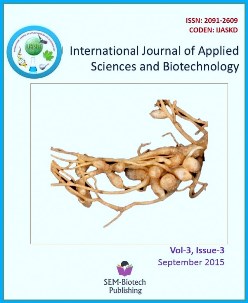Efficiency of Traditional Water Treatment Plant and Compact Units in Removing Viruses
DOI:
https://doi.org/10.3126/ijasbt.v3i3.13332Keywords:
Viral gastroenteritis, Drinking water, Rotaviruses, Pollution, Water purification systems, RT-PCRAbstract
The fecal bacteria have been taken as the gold standard for water industry. However, the spread of viral gastroenteritis due to drinking water have given a momentum to a recent push by microbiologists to consider viruses as important pollution indicator as fecal bacteria. Therefore, we designed a study to evaluate the efficiency of two types of water purification systems: the traditional water treatment plant and two types compact units. Both systems produced drinking waters free of bacteria, chemical contaminants and mostly viruses free. However, recent advances in molecular biology techniques, such as RT-PCR have detected Rotaviruses in chlorinated drinking waters resulted from all systems. The frequency of Rotaviruses since October 2010 till September 2012 in Shark El-Mansoura WTP in drinking water samples was 12.5% similar to raw water. While the compact unit at Depo Awam (American design) the frequency of Rotavirus was 16.6% in both raw and drinking water samples. On the other hand the virus frequency in the raw and drinking water sample in El-Danabik unit (Egyptian design) were 12.5% and 4.16% respectively. Signifying failure of the chlorination process in removing viruses completely. However, detection of Rotavirus genome in the drinking water samples does not means the presence of its infectivity. The infectious ability of the rotaviruses was confirmed by CC-RT-PCR in all positive samples, where viral RNA was not detected in the collected drinking water samples. In conclusion RT-PCR and CC-RT-PCR techniques high lightened the need to include viruses as mandatory pollution indicator in water treatment plants.
Int J Appl Sci Biotechnol, Vol 3(3): 528-536




